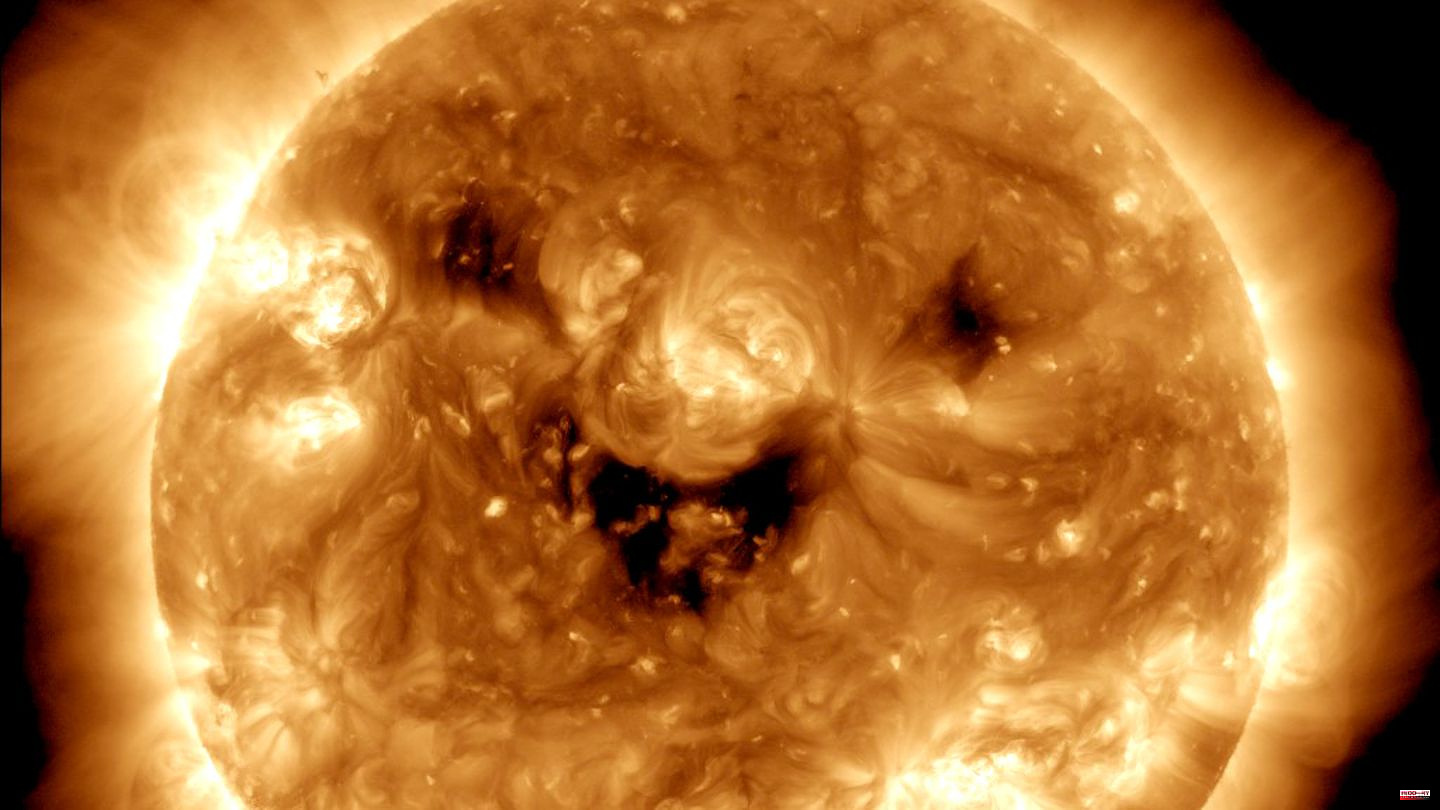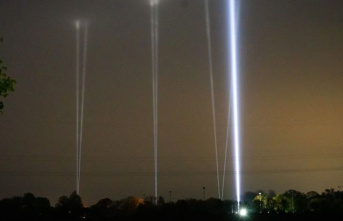The sun is smiling – in the truest sense of the word. A NASA satellite image released on Thursday shows the celestial body with what appears to be a happily smiling face. The three dark spots that look like two eyes and a mouth are what are known as coronal holes.
The space agency shared the image on Twitter with the caption: "Today, NASA's Solar Dynamics Observatory captured the sun 'smiling'." The coronal holes are only visible in ultraviolet light and mark regions where faster solar wind leaves the celestial body. Solar wind is the term used to describe radiation and charged particles that the sun constantly sends out into space.
The Solar Dynamics Observatory is an agency mission designed to study how solar activity occurs and how it affects space weather. Since February 2010, the observatory has been measuring the sun's interior, atmosphere, magnetic field and energy release. The image of the "laughing sun" could indicate a solar storm.
If the solar winds are significantly stronger in a certain area within a short period of time - for example in the coronal holes - a solar flare occurs. When these intensified winds hit the earth, one speaks of a solar storm. According to the British "Guardian", experts expect that the weather phenomenon could occur on Saturday. A solar storm can deform the Earth's magnetic field. For people, the associated effects are usually only minimal or hardly noticeable.
In places, the power grid could fail due to excessive voltage and destroyed transformers. According to the Max Planck Institute for Solar System Research, such effects occur primarily at high latitudes. The particles from the solar storm can also affect GPS satellites. As a result, there may be delayed communication signals and miscalculations of locations.
In the polar regions, solar storms often trigger aurora borealis. During strong solar storms, the earth's magnetic field can be deformed so much that the luminous phenomena are also visible in Germany. It remains to be seen whether there will actually be a solar storm this weekend.
The possible announcement, the "laughing sun", is certainly a hit on Twitter. In the flaming ball with a "face", users see a lion, the sun from the children's series Teletubbies or - appropriate to the season - a Halloween pumpkin.
Sources: Max Planck Institute for Solar System Research (I), Max Planck Institute for Solar System Research (ii), "The Guardian"












